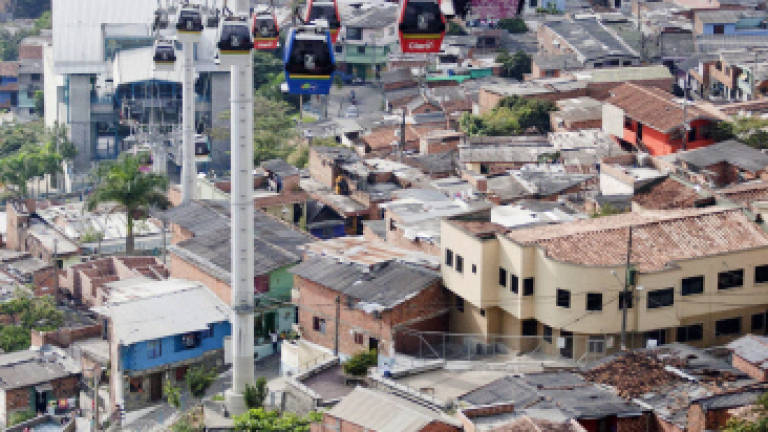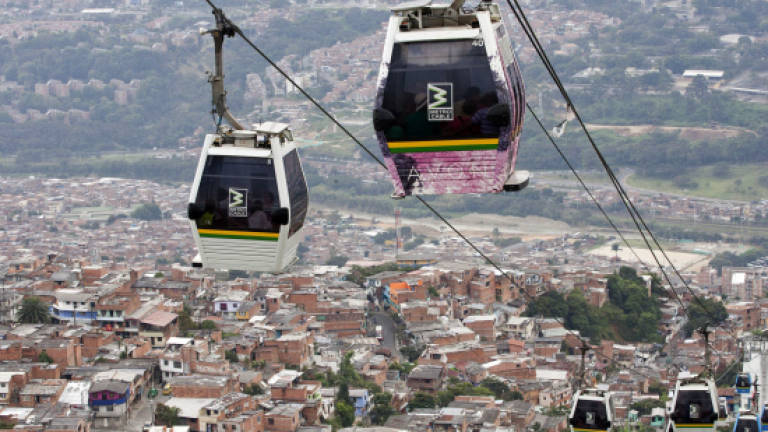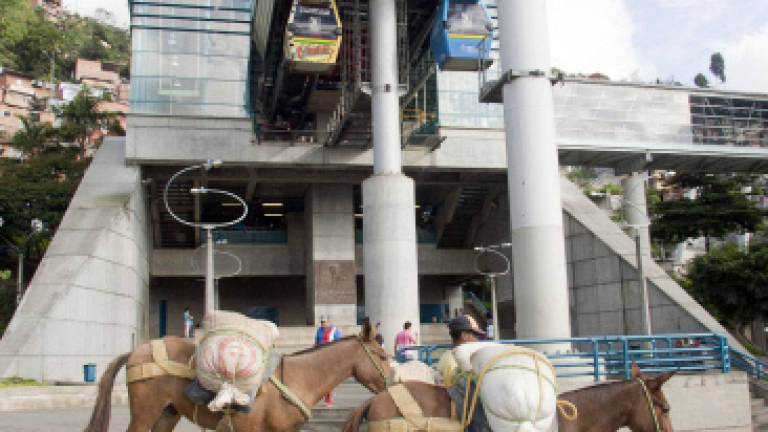Colombia's Medellin rides cable car to a better future



MEDELLIN (Jan 26, 2014): Medellin's "cable car of the poor," soaring over the slums of Colombia's second largest city, has revolutionized this former drug lord fiefdom and inspired other violent Latin American cities.
The city of 2.5 million, long considered one of the most dangerous places on the planet, has seen crime rates fall and neighbourhood life return thanks to new public services in some of its poorest areas.
At the centre of the strategy to reclaim the slums is a transportation system that now includes subways, the cable car, hillside escalators and even public libraries at metro stations.
It "creates a sense of belonging," said Juliana Correa, communications director for the Metro de Medellin.
"Before, the people of the hillside slums would say, 'I'm going down to Medellin.' Now they feel part of the city," he said.
At the Acevedo station, where the subway and Metrocable meet, a huge library welcomes residents from the gritty neighbourhoods surrounding it -- and also tourists who ride the cable car for the spectacular birds eye views of the city.
"This was a very violent neighbourhood, not that busy, so there was no transportation," Luz Valdes, at a small grocery store just outside the station, told AFP.
"Now there are many jobs and many tourists from far away visit the neighbourhood because it's very nice with the Metrocable and library."
'Dark, long night'
It is all a far cry from just a few years ago.
Medellin went through "a dark, long and painful night", the mayor, Anibal Gaviria, told AFP, referring to the 1990s, when the drug lord Pablo Escobar unleashed a wave of violence.
Then, the city had a startling homicide rate of 380 per 100,000 inhabitants and the dubious distinction of being known as the murder capital of the world.
Last year, the murder rate was 10 times lower according to the mayor. Other studies support the claim that there has been a sharp drop in violence.
To change the dynamic local governments have employed a kind of "urban acupuncture," bringing to bear a welter of programs designed to reach long neglected shantytowns.
With an $88 million budget in 2014, the plan provides transportation at critical points and promotes education, culture, health and the deployment of security forces.
The Metrocable opened in 2004, and the subway system has also added on a bicycle rental service.
But the most striking initiative is a system of outdoor escalators that has served Comuna 13, one of the poorest and most violent areas in Medellin, since December 2011.
Instead of trudging up 350 concrete steps, residents take escalators now.
"Projects such as the Metrocable, the metro, the escalators and the libraries imply the presence of the state in places in the city that had been abandoned," Gaviria said.
'Cable car of the poor'
None of this is to say that Medellin does not still have considerable problems. In Comuna 1, which is served by a cable car, gangs maintain a discreet presence.
But Ferney Navarro, a resident of 32 years, told AFP: "There is more control from the authorities.
"Seeing so many tourists coming, the government has had to tighten control. Before we were totally abandoned, but now we have more protection."
A study by Columbia University in the United States found the homicide rate in the slums of Medellin where Metrocable serves dropped by 66 percent between 2003 and 2008.
This decrease coincides with a sharp drop in homicides in Colombia -- from 78 per 100,000 population in 1991 to 32 in 2012.
The rate, however, remains well above the Latin American average of 15.6 , according to the Organization of American States.
A secret of Medellin's success has been its ability to adapt initiatives that have worked elsewhere in the world.
At the same time, the city has become "an inspiration for other cities living difficult times," said the mayor.
Thus the Metrocable -- "the cable car of the poor" -- has been replicated in Curitiba, in southern Brazil, and Caracas, capital of Venezuela.
Since 2010 in San Agustin del Sur, in the west of Caracas, a Metrocable carries more than 40,000 people a day on a nine-minute ride from the foot of a mountain to the populous neighbourhoods overhead.
That initiative's success led Venezuelan authorities to begin building another cable car serving Mariche neighbourhood in February 2012.
Another is scheduled for December this year for Petare, the largest slum in the Venezuelan capital and one of the most overcrowded in Latin America. – AFP